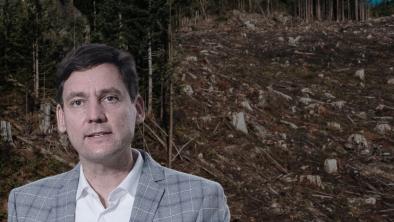Wild Times: Keeping Trudeau’s Promise
Watershed Sentinel

There are currently enough Indigenous protected area proposals and land use visions to launch BC on a path to doubling protected areas by 2030 – if only Victoria would act on them.
Back in September of 2020, the governments of Canada, EU, and Britain pledged to protect 30 per cent of their territories by 2030 to help mitigate impacts of catastrophic climate change and widespread species loss.
For many of the countries who signed the pledge it wasn’t that big of a deal. For example, Britain is already close to meeting the 30 per cent target (though much of its so-called protected land wouldn’t be considered protected in Canada, as agricultural land that is actively being farmed or grazed). But it was a very big deal for Canada, the second largest nation on Earth, to make the 30 per cent by 2030 pledge.
For Canada to meet the 2030 deadline, a great deal of wild country is going to need to be granted protected area status. The Prime Minister says that the way forward is to work with Indigenous people to designate new protected areas — and he is right in that — but only half right.
Because of how powers are divided up in Canada, the provinces swing a lot of weight — especially in land-use issues. In British Columbia, which is Canada’s most biodiverse region, provincial government representatives have been slow to show much enthusiasm for meeting the 2030 deadline.
- ACT NOW: Protect these last chance landscapes
-
Currently, about 15 per cent of BC is in a protected area. To meet the 2030 deadline this province needs to double parklands by 2030, which is no small task.
To be fair, BC has shown support for some Indigenous land use visions. One example is the proposed Qat’muk Indigenous Protected Area (IPA) being designed right now by the Ktunaxa Nation. The IPA is expected to cover about 70,000 hectares in southeast BC north of the existing Purcell Wilderness Conservancy Provincial Park. It is very helpful to see BC in support.
But other IPA proposals have so far been met with the provincial cold shoulder — and that is shameful.
The Tŝilhqot’in Nation’s Dasiqox Tribal Park, located in the shared caretaker areas of the communities of Xeni Gwet’in and Yuneŝit’in, encompasses about 300,000 hectares. This spectacular IPA has been waiting far too long for provincial recognition, legislation, and proper funding. And it’s not the only one. There are currently enough Indigenous protected area proposals and land use visions to well and truly launch BC on a path to doubling protected areas by 2030 – if only Victoria would act on them.

BC is going to need to legislate preservation and funding for every IPA, grove of endangered old-growth forest, favourite fishing lake, hiking trail, wilderness gem, watershed that supplies drinking water, and species-at-risk habitat. In parts of the province there just isn’t enough old-growth or wilderness left — the province is going to need to include industrially damaged watersheds and begin the long task of restoring them to former glory.
Mr. Trudeau made his promise on the world stage. Its biggest benefits will be felt right here in BC – but we are all going to have to work real hard to ensure the promise is kept.
View the original article published by the Watershed Sentinel
Fancy meeting you here at the end of this article! Care to hang out together for a few more sentences?
The campaign you just read about is one of about 20 we’re actively working on at any given time. And the person who wrote this article is the same campaigner who’s asking you to take action, who’s calling on our legislators to make changes and who’s in the field to bring you photos, videos and stories documenting this issue.
Did you notice how we’re a bit distinct, that we’re not afraid to call out the industries or governments that threaten what’s wild? Unlike other groups, we’re almost 100 per cent* “people powered.” Individuals like you who care give what they can, when they can. No corporate or government funding restricts our strategies, our actions or our voice. That’s how we stay a lean, nimble and unequivocally relentless voice for wilderness, wildlife and the climate. That’s why we’d love it if you’d consider joining us by making a monthly donation to the Wilderness Committee today.
LET'S MAKE A DIFFERENCE TOGETHER
We’ve already established you like to read to the end, so here’s the fine print. It’s 96 per cent of our funding which comes from individuals like you and me. About four per cent of our total funding comes from a few grants from foundations. Every gift — no matter the size — has an impact and powers our work for nature.


